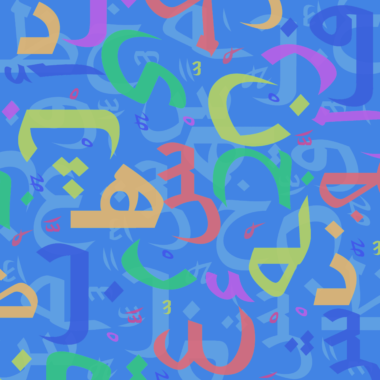Arabic language
Arabic language, Central Semitic language spoken in a large area including North Africa, most of the Arabian Peninsula, and other parts of the Middle East, It’s the native tongue of more than 250 million people worldwide, Arabic is usually ranked among the top six of the world’s major languages. As the language of the Qur’an, the holy book of Islam.
Click here to start a FREE TRIAL

There are many Arabic dialects:
- Classical Arabic – the language of the Holy Qur’an – was originally the dialect of Mecca in the kingdom of Saudi Arabia now.
- A modified layout of this, known as Modern Standard Arabic, is used in books, newspapers, on television and radio, in the mosques, and in the conversation between educated Arabs from different countries (for example at international conferences).
- Local dialects vary considerably, and an Egyptian might have the easiest understanding dialect across the Arabian world, on the other hand, there is a Tunisian dialect which is so difficult even though they speak the same language.
After this classification, we can find vivid differences as followed :
Modern Standard Arabic largely follows the grammatical requirements of Classical Arabic and uses much of the same vocabulary. However, it has ignored some grammatical constructions and vocabulary that no longer have any equivalent in the spoken words. Much of the new vocabulary is used to suggest ideas that have arisen in the industrial and post-industrial era, especially in modern times. Due to its grounding in Classical Arabic, Modern Standard Arabic is no longer in use over a millennium from the normal speech, which is established as a multitude of dialects of this language. These dialects and Modern Standard Arabic are described by some orientalists as not mutually understandable. The former are usually acquired in ordinary life, while the latter is hard informal educational concepts. However, there have been studies reporting some degree of comprehension of stories told in the standard variety among preschool-aged children.
MSA is the variety used in most current, printed Arabic publications, spoken by some of the Arabic media across North Africa and the Middle East, and understood by most educated Arabic speakers. “Literary Arabic” and “Standard Arabic” (فُصْحَى) are less strictly defined terms that may refer to Modern Standard Arabic or Classical Arabic.
Some of the differences between Classical Arabic (CA) and Modern Standard Arabic (MSA) are as follows:
Certain grammatical setups of CA that have no equivalent in any modern dialect are almost never used in Modern Standard Arabic.
No modern spoken variety of Arabic has case distinctions. As a result, MSA is generally composed without case distinctions in mind, and the proper cases are added after the fact, when necessary. Because most case endings are noted using final short vowels, which are normally left unwritten in the Arabic script, it is unnecessary to determine the proper case of most words. The practical result of this is that MSA, like English, is written in a strongly determined word order and alternative orders that were used in CA for emphasis are rare. In addition, because of the lack of case marking in the spoken varieties, most speakers cannot consistently use the correct endings in extemporaneous speech. As a result, spoken MSA tends to drop or regularize the endings except when reading from a prepared text.
The numeral system in CA is complex and heavily tied in with the case system. This system is never used in MSA, even in the most formal of circumstances; instead, a significantly simplified system is used, approximating the system of the conservative spoken varieties.
The Arabic alphabet
Arabic is written from right to left. There are 18 definite letter shapes, which vary depending on whether they are connected to another letter before or after them. There are no “capital” letters that are what distinguishes it among other languages.
The full alphabet of 28 letters is created by placing various patterns of dots above or below some of these shapes.
Read more about the Arabic alphabet/ Arabic letters here.
Learning the Arabic / Study Arabic:
Try to learn the alphabet step by step. First of all, you learn four new letters each day and practice for two hours every day it will take less than two weeks.
Practice writing each letter in all its forms (at the beginning, medial and final), pronouncing it aloud as you write to try to listen to the news as extra auditory aids.
The second step, practice writing them in groups of four, in the order, they occur in the alphabet. Each time you write a group, drop the first letter from the beginning and add another to the end, working through the alphabet.
Aldhad institute offers extremely professional courses in the Arabic language that illustrate Arabic writing, Arabic reading & how to study Arabic.
Numerals:
In most of present-day North Africa, the Western Arabic numerals (0, 1, 2, 3, 4, 5, 6, 7, 8, 9) are used. However, in Egypt and Arabic-speaking countries to the east of it, the Eastern Arabic numerals (٠ – ١ – ٢ – ٣ – ٤ – ٥ – ٦ – ٧ – ٨ – ٩) are in use. When representing a number in Arabic, the lowest-valued position is placed on the right, so the order of positions is the same as in left-to-right scripts. Sequences of digits such as telephone numbers are read from left to right, but numbers are spoken in the traditional Arabic fashion, with units and tens reversed from the modern English usage. For more information about Arabic numbers CLICK HERE


